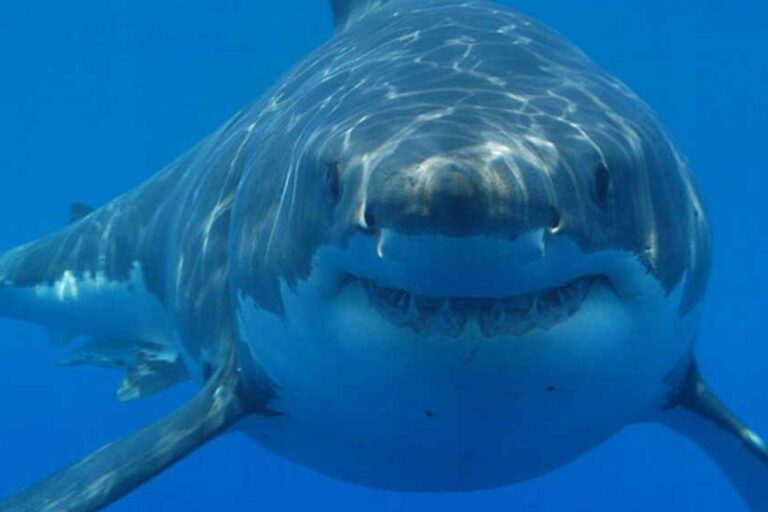A massive great white shark has resurfaced off the coast of North Carolina, capturing the attention of marine experts and local residents alike. The rare sighting, confirmed by researchers monitoring the region’s shark population, highlights the continuing presence of these apex predators in Atlantic waters. This latest appearance has prompted renewed discussions about shark behavior, conservation efforts, and coastal safety measures along the Eastern Seaboard.
Massive Great White Shark Spotted Off North Carolina Coast Sparks Marine Interest
The sighting of a colossal great white shark off the coast of North Carolina has captivated marine biologists and local communities alike. Measuring an estimated 18 feet in length and weighing over 2,000 pounds, this apex predator’s recent appearance is one of the largest ever documented in the region. Experts suggest that the shark’s size and health indicate a thriving population, providing vital clues about the species’ migratory patterns and the ecosystem’s overall condition.
Local authorities have issued safety advisories while encouraging responsible observation. Conservationists emphasize the importance of understanding these majestic creatures without disrupting their natural habitat. Key points emerging from the study include:
- Stable great white populations: Indicators show a positive growth trend along the Atlantic seaboard.
- Enhanced tracking technology: Satellite tags and drones are aiding real-time monitoring efforts.
- Coexistence strategies: Initiatives to balance human activities and shark conservation are gaining ground.
| Attribute | Details |
|---|---|
| Length | Approx. 18 feet |
| Weight | Over 2,000 pounds |
| Estimated Age | 15 – 20 years |
| Location Spotted | Off the coast of Outer Banks, NC |
| Tracking Method | Satellite tagging & drone imaging |
Experts Analyze Behavior and Migration Patterns of Great Whites in Atlantic Waters
Recent observations have shed new light on the movements of great white sharks along the Atlantic seaboard. Marine biologists suggest that these apex predators exhibit seasonal migration patterns influenced by water temperature, prey availability, and breeding cycles. Tagging and satellite tracking have revealed that certain individuals can travel hundreds of miles between the mid-Atlantic and the southeastern coast, highlighting the vast range these creatures cover in search of food and suitable habitats. Experts emphasize the importance of continued monitoring to better understand shifts in their behavior caused by environmental changes.
Analysis of tracking data and behavioral studies has identified key regions critical to great white shark populations, including areas around the Outer Banks of North Carolina. These zones serve as both hunting grounds and potential mating sites. Below is a summary table of migration hotspots noted in the latest research:
| Region | Season | Common Activity |
|---|---|---|
| Outer Banks, NC | Spring – Summer | Feeding on seal populations |
| Mid-Atlantic Ridge | Autumn | Long-distance migration |
| Gulf Stream Waters | Winter | Resting and conserving energy |
- Behavioral shifts linked to prey migration patterns
- Influence of climate change on migratory timing
- Potential risks posed by increased human-shark encounters along popular beaches
Safety Measures Advised for Coastal Communities Amid Increased Shark Sightings
In light of recent great white shark sightings off the North Carolina coast, local authorities urge residents and visitors to adhere to essential precautions when near the water. Swimmers and surfers are advised to avoid entering the ocean at dawn, dusk, or night hours, as these periods coincide with heightened shark activity. Additionally, it is recommended to stay in groups rather than swimming alone, and to refrain from wearing shiny jewelry or brightly colored gear that could attract sharks. Boaters should maintain a safe distance from any observed sharks and report sightings to marine patrol immediately.
Key Safety Tips for Coastal Visitors:
- Avoid swimming near fishing activity or seals, their natural prey
- Stay within designated swimming areas monitored by lifeguards
- Do not enter the water with open wounds or bleeding
- Use shark deterrent technology when available
- Immediately exit water if schools of fish or dolphins suddenly scatter
| Precaution | Reason |
|---|---|
| Swim in groups | Reduces chances of shark encounters |
| Avoid swimming at dawn/dusk | Shark feeding times |
| Stay away from seal colonies | Sharks hunt near prey |
| Report sightings | Ensures public awareness and safety |
In Summary
As sightings of great white sharks along the North Carolina coast continue to draw attention, experts emphasize the importance of ongoing monitoring and public awareness to ensure both human safety and the protection of these apex predators. The recent resurgence of this massive great white underscores the dynamic nature of marine ecosystems and the need for continued research on shark behavior and habitat use. Authorities urge beachgoers to stay informed and exercise caution while enjoying the region’s waters.




